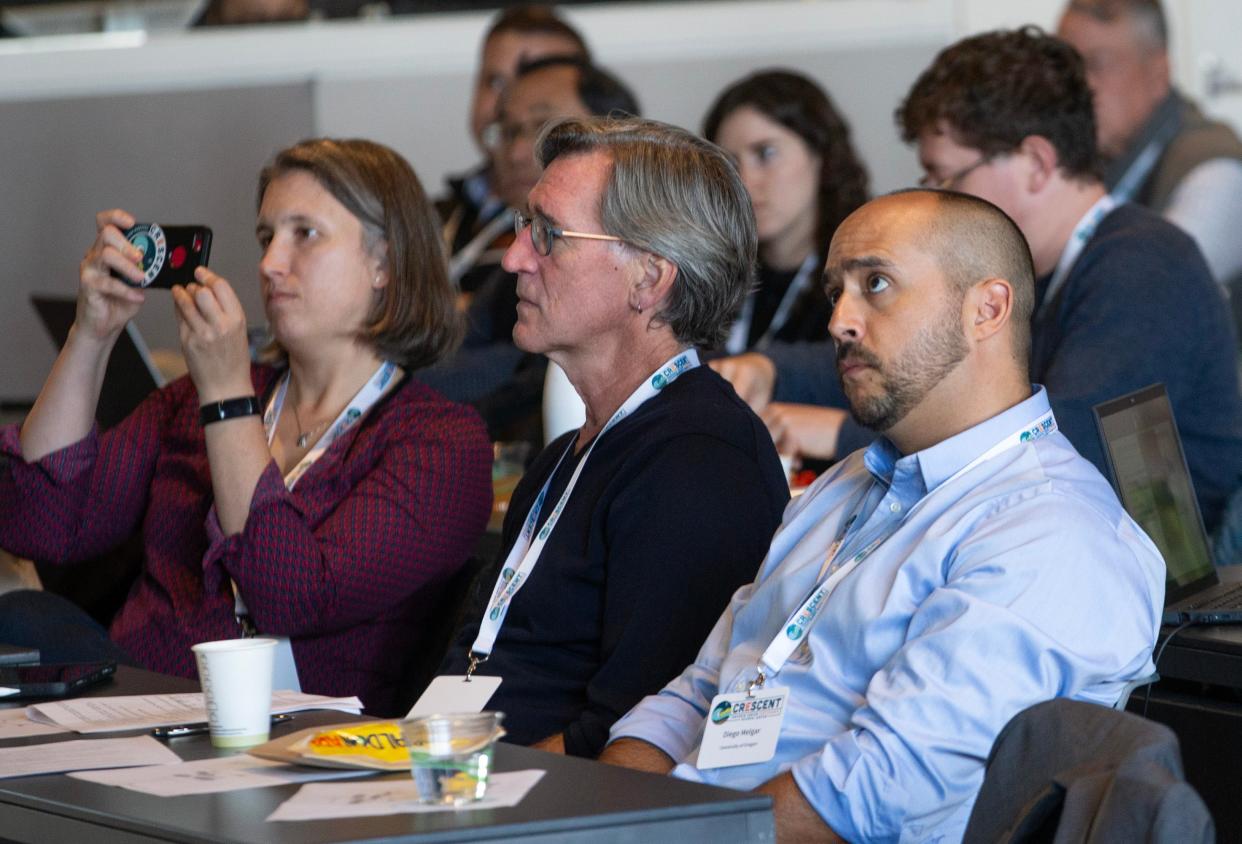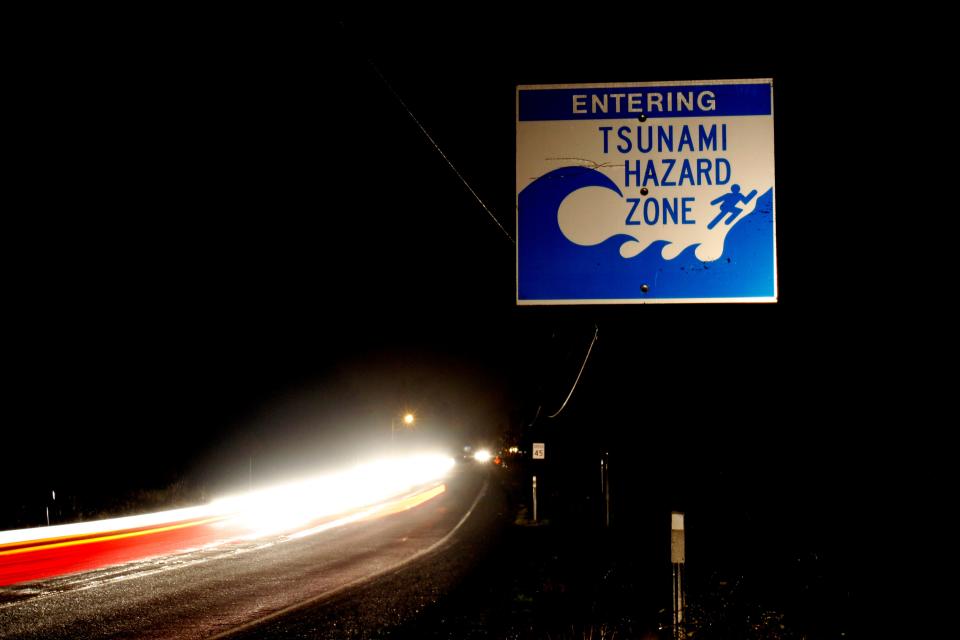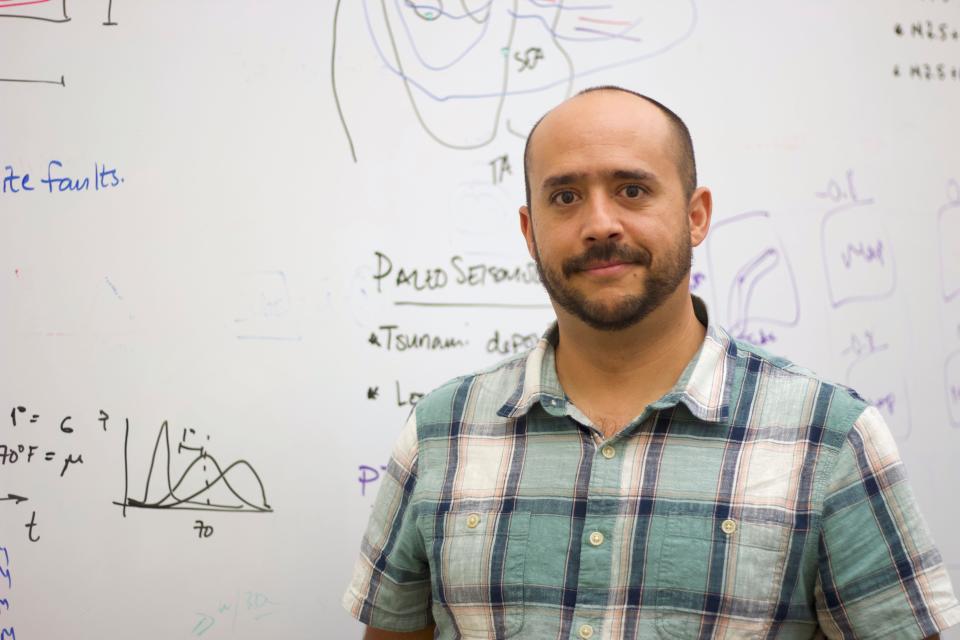How destructive could ‘the big one’ be? A new UO earthquake center will study impacts

The University of Oregon's newly launched earthquake research center will bring together 16 institutions in the effort of researching earthquakes, their risks and impacts, and, in particular, "The Big One."
The Cascadia Region Earthquake Science Center (CRESCENT) will be the first center of its kind in the nation focused on earthquakes at subduction zones, where one tectonic plate slides beneath another.
There are other similar earthquake research centers around the nation, such as the Southern California Earthquake Center at Caltech, but CRESCENT will focus solely on the Cascadia subduction zone, an offshore tectonic plate boundary that stretches more than 1,000 kilometers from southern British Columbia to northern California.
The 1700 Great Cascadia earthquake was the most recent big quake in the zone. If one similar to it were to occur now, researchers say it would have significant impacts: 10,000 casualties, thousands of buildings destroyed and thousands of households displaced. Depending on location, it could take weeks to years to restore basic utilities.
CRESCENT will not push for preparation or infrastructure readiness, said Diego Melgar Moctezuma, associate professor of earth sciences at UO, who has been named center director.
The scientists will research when a significant earthquake might occur, what magnitude it could be, how long shaking could go on, how frequently these earthquakes could occur, as well as questions about tsunamis on the West Coast.
Faculty and staff will research and publish to inform agencies on how to adjust building codes, for example, said Melgar Moctezuma.
"Those are really important things to know, because that informs the building code," he said. "You can't be infinitely strict, because that would mean buildings to be extremely expensive. The building codes need to be just right. They need to be tough enough for the worst earthquakes that we can expect in a region."

Shaking up the earthquake field
Creation of the center has been in the works since around the start of the COVID-19 pandemic, according to Melgar Moctezuma.
Interest in earthquake science and seismology has grown significantly in the Pacific Northwest, as indicated in part by the growth of such departments in nearby public universities, he said. He and his colleagues saw a spike in seismologists working on much of the same research, but there was no organization and not enough collaboration.
Melgar Moctezuma said many of his colleagues came from the Southern California Earthquake Center and know the value of a collaborative research center and how useful it could be in the Pacific Northwest.
Then, in 2021, the National Science Foundation announced a solicitation for geohazard research at university-based centers.
"It was just an obvious thing to do," Melgar Moctezuma said. "It was a little bit lucky − a consequence of the money being made available by the federal government, but also of enough people being here that care about those things."
CRESCENT was funded by a $15 million grant through the National Science Foundation:
There are three "pillars" of CRESCENT:
Science: conduct research
Partnerships and applications: connect with state geological surveys and other federal, state, county and city agencies.
Geoscience education and inclusion: seek to diversify the field of seismology by providing more opportunities for young people to get involved and learn about earthquake science.
The center will push for more diversity in the earth sciences field, which has the "worst track record" of all STEM fields, with low proportions of women, Latinx and Black professionals, Melgar Moctezuma said.
The 16 participating institutes have plans for student learning and experience opportunities at the high school, undergraduate and graduate levels.

One of the programs is a high school STEM pathways geared toward tribal high schools. Melgar Moctezuma said he has never met a Native American seismologist.
"How is that possible?" he asked.
The pathways program would bring Indigenous students to participating universities, letting them stay in the dorms for a weekend, eat in the dining halls, teach them how to apply to college and think about choosing majors. They also will be doing research and work in earth sciences, though Melgar Moctezuma said the focus will be "demystifying" the college experience.
Several of the college-level programs will be paid, allowing students to participate who might normally pass up such an opportunity in order to work through college. While the programs are mostly in the planning stages, he expects 30 to 40 paid graduate researchers, hopefully with future growth.
"Now that we exist as a center, an entity that people will know and hopefully trust and get to know our brand, we can try to grow it," Melgar Moctezuma said. "We can go to other agencies like the U.S. Geological Survey, or NOAA (National Oceanic and Atmospheric Administration) that handles all our tsunami hazards and ask for other funds to increase our impact. That's definitely part of our plan."
Earthquake culture and preparedness
"The Big One" is a commonly heard reference along the West Coast. CRESCENT's research will hopes to provide more clarity on when, where and how it could happen.
"The center will conduct research that is directly relevant to earthquake and tsunami hazards but too ambitious for any one scientist to take on individually," Amanda Thomas, UO associate professor and chief technical officer for CRESCENT, said in a press release. “Our goal is to create community-endorsed research products that are immediately relevant for science and hazard estimates.”
Melgar Moctezuma said there is a complacency about a large earthquake occurring.
"I feel a real sense of urgency. We're really, really behind," he said about preparation for a large earthquake. "Earthquake culture here is not as well honed."
He said over time, as earthquakes have become less common, many people in the Pacific Northwest have forgotten about the threat. Melgar Moctezuma acknowledged widespread discussions around the possibility of a big earthquake picked up in the '90s, but said there is still not a great level of public preparedness.
"That's the kind of thing we can do, we can build that science of 'How bad is the hazard going to be? How frequently is there going to be?' and so on."
Melgar Moctezuma said some of CRESCENT's other priorities are creating a detailed mapping of the hundreds of fault lines in the Pacific Northwest, determining which are most active.
CRESCENT will publish all its work on its website, cascadiaquakes.org, and ask for community feedback.
Participating CRESENT institutions include:
University of Oregon
Central Washington University
Oregon State University
University of Washington
Cal Poly Humboldt
Cedar Lake Research Group
EarthScope Consortium
Portland State University
Purdue University
Smith College
Stanford University
UC San Diego, Scripps Institution of Oceanography
University of North Carolina-Wilmington
Virginia Tech
Washington State University
Western Washington University
Miranda Cyr is a reporter for The Register-Guard. You can contact her at mcyr@registerguard.com or find her on Twitter @mirandabcyr.
This article originally appeared on Register-Guard: University of Oregon leads Cascadia Region Earthquake Science Center

